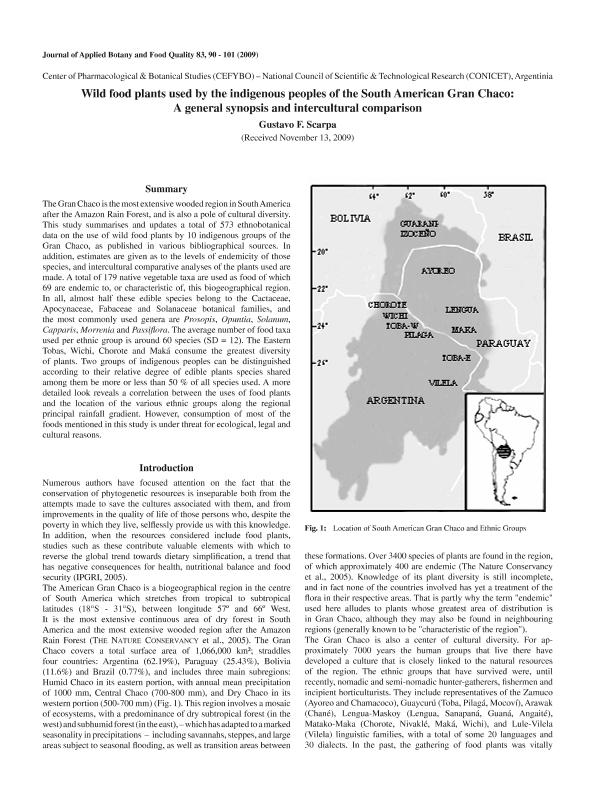Artículo
Wild food plants used by the indigenous peoples of the South American Gran Chaco: A general synopsis and intercultural comparison
Fecha de publicación:
12/2009
Editorial:
Druckerei Liddy Halm
Revista:
Journal of Applied Botany and Food Quality-Angewandte Botanik
ISSN:
1613-9216
Idioma:
Inglés
Tipo de recurso:
Artículo publicado
Clasificación temática:
Resumen
The Gran Chaco is the most extensive wooded region in South America after the Amazon Rain Forest, and is also a pole of cultural diversity. This study summarises and updates a total of 573 ethnobotanical data on the use of wild food plants by 10 indigenous groups of the Gran Chaco, as published in various bibliographical sources. In addition, estimates are given as to the levels of endemicity of those species, and intercultural comparative analyses of the plants used are made. A total of 179 native vegetable taxa are used as food of which 69 are endemic to, or characteristic of, this biogeographical region. In all, almost half these edible species belong to the Cactaceae, Apocynaceae, Fabaceae and Solanaceae botanical families, and the most commonly used genera are Prosopis, Opuntia, Solanum, Capparis, Morrenia and Passiflora. The average number of food taxa used per ethnic group is around 60 species (SD = 12). The Eastern Tobas, Wichi, Chorote and Maká consume the greatest diversity of plants. Two groups of indigenous peoples can be distinguished according to their relative degree of edible plants species shared among them be more or less than 50 % of all species used. A more detailed look reveals a correlation between the uses of food plants and the location of the various ethnic groups along the regional principal rainfall gradient. However, cnsumption of most of the foods mentioned in this study is under threat for ecologieal, legal and cultural reasons.
Palabras clave:
Chaco
,
Food Plants
,
Ethnobotany
,
Indigenous
Archivos asociados
Licencia
Identificadores
Colecciones
Articulos(CEFYBO)
Articulos de CENTRO DE ESTUDIOS FARMACOLOGICOS Y BOTANICOS
Articulos de CENTRO DE ESTUDIOS FARMACOLOGICOS Y BOTANICOS
Citación
Scarpa, Gustavo Fabián; Wild food plants used by the indigenous peoples of the South American Gran Chaco: A general synopsis and intercultural comparison; Druckerei Liddy Halm; Journal of Applied Botany and Food Quality-Angewandte Botanik; 83; 1; 12-2009; 90-101
Compartir




